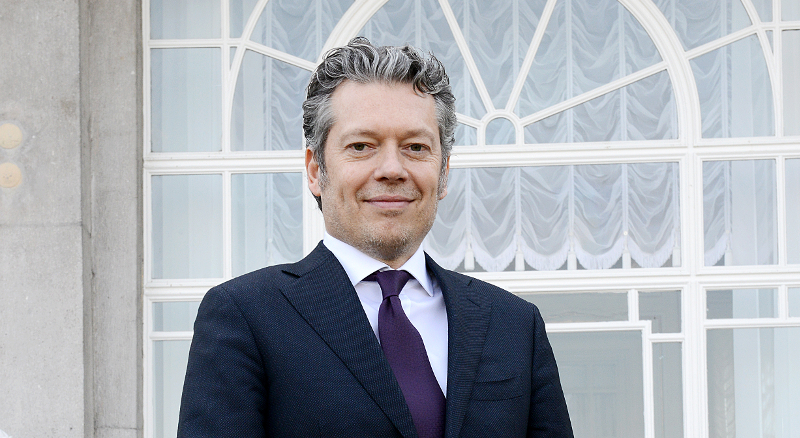
Cyber security assessments may be useful if your business relies on the operation of critical infrastructure. These evaluations examine operational resilience, cybersecurity practices, organizational management of external dependencies, and other key elements of a robust cyber framework. These assessments can strengthen the security and stability of your business.
Red-teaming
Companies can use red-teaming to assess their cyber security and better understand the protection they have against cyberattacks. These teams simulate real-world attackers, using proprietary and open-source intelligence tools to carry out reconnaissance and attack scenarios. The teams may use social engineering to gain access data and network resources in some cases. They will then raise their privileges to ensure persistence and build a command and control infrastructure.
Red-teaming services are expensive. It's worth determining how much you can afford in advance. The cost of a full-spectrum simulated attack can be significant, particularly if it involves social engineering and physical intrusion. It is also important to decide how high of a risk you can bear before hiring a red-team. Different companies have different risk tolerances.

Penetration testing
Penetration testing plays a crucial role in a cyber security assessment. It involves the use automation tools to try and exploit security holes. The goal is to gain access to the target information and gain valuable data. Penetration tests require a deep understanding of the system and application being tested. Penetration tests are not limited to external attacks. This is a common misconception. This misconception has been addressed by security researchers who have produced a webinar and a post.
Penetration testing is an automated and manual process that uncovers weaknesses in networks and systems. Internal and external penetration tests are essential to ensure security in an organization. Penetration testing is used to determine whether an intruder could carry out malicious activities on the network. To determine whether vulnerabilities exist and what defenses are in place, a red team outside of the organization can carry out these tests.
Configuration testing
A security assessment is an important step in identifying vulnerabilities in an organization's IT environment. This process maps access control points and services to identify weaknesses and determine the risk of a security breach. It also pinpoints any security patches missing from the system. After the assessment, you will be able to determine what steps are needed to fix security gaps.
Cyber professionals with certification are usually responsible for performing CSAs. Some of these individuals are former UK Government cyber operations specialists and have extensive knowledge of security vulnerabilities. The testing team will normally include at minimum one CISSP certificate holder as well as specialized cyber technical certifications.

Social engineering
Companies must be aware of the dangers that social engineering can pose to their businesses. The best way to defend yourself is to be aware of your vulnerabilities, especially in the case of emails. Unsolicited communications should always be investigated to confirm that they are legitimate.
Any organization can use a social engineering cybersecurity assessment to identify potential vulnerabilities and determine how to minimize them. These assessments can include detailed analysis of online information that may pose a threat. Simulated attacks can be included to train employees how to avoid becoming a victim of phishing campaigns.
FAQ
How much should a consultant charge?
It all depends upon what you offer. If you are providing services for free, then there isn't any point in charging anything. You must charge for services or products if you want to sell them.
If you offer low-quality services then you don’t have anything for sale. Why should anyone pay for your services?
If you provide high-quality service, you may ask for higher prices because people appreciate the value you offer. Clients who purchase multiple packages may be eligible for discounts.
What industries employ consultants?
There are many types of consultants. There are many types of consultants. Some specialize in one type of business, while others can handle multiple areas.
While some consultants only work for private companies, others represent large corporations.
And some consultants work internationally, helping companies all over the world.
What should I expect from my consultant
When you choose your consultant, they should respond within a few working days. They will ask you for information about your business, including the mission, goals, products, and budget. After that, they will send you a proposal detailing the scope of work, expected time frame, fees and deliverables.
If everything is in order, then the parties will enter into a written contract. The type of relationship between them (e.g. employer-employee or employer-independent contractor) will determine the terms of the contract.
If everything goes well, the consultant should start work immediately. The consultant will have full access to your files and resources. You'll also have access to their skills and knowledge.
You shouldn't assume, however, that every consultant is an expert in all areas. It takes practice and hard work to become an expert in the field you are consulting. You shouldn't expect your consultant will know everything you need to know about your business.
Statistics
- On average, your program increases the sales team's performance by 33%. (consultingsuccess.com)
- According to IBISWorld, revenues in the consulting industry will exceed $261 billion in 2020. (nerdwallet.com)
- According to statistics from the ONS, the UK has around 300,000 consultants, of which around 63,000 professionals work as management consultants. (consultancy.uk)
- Over 50% of consultants get their first consulting client through a referral from their network. (consultingsuccess.com)
- My 10 years of experience and 6-step program have helped over 20 clients boost their sales by an average of 33% in 6 months. (consultingsuccess.com)
External Links
How To
What's a typical day like for a Consultant?
Each type of work will dictate the day's pace. But generally speaking, you will spend time researching and planning new ideas, meeting clients, and preparing reports.
Clients will often meet with you to discuss their problems. These meetings can be conducted over the phone, by email, face-to-face, or online.
Sometimes, you may be asked to create proposals. These are documents that outline your ideas and plans for clients. You'll need to discuss your proposals with a mentor, colleague, or friend before you present them.
You will need to create content after all your planning and preparation. You could write articles, design websites, edit photos or conduct interviews.
Based on the scope and complexity of the project you may need research to obtain relevant statistics. For example, you may need to find out how many customers you have and whether they are buying more than one product or service.
Once you have collected enough information, it's now time to present the findings to your clients. Your findings can be presented orally or written.
After your initial consultation, you should follow up with your clients. You might contact them regularly to check on their progress or send them emails to confirm they have received your proposal.
While this can be a slow process, it's essential to remain focused and maintain good working relationships with clients.